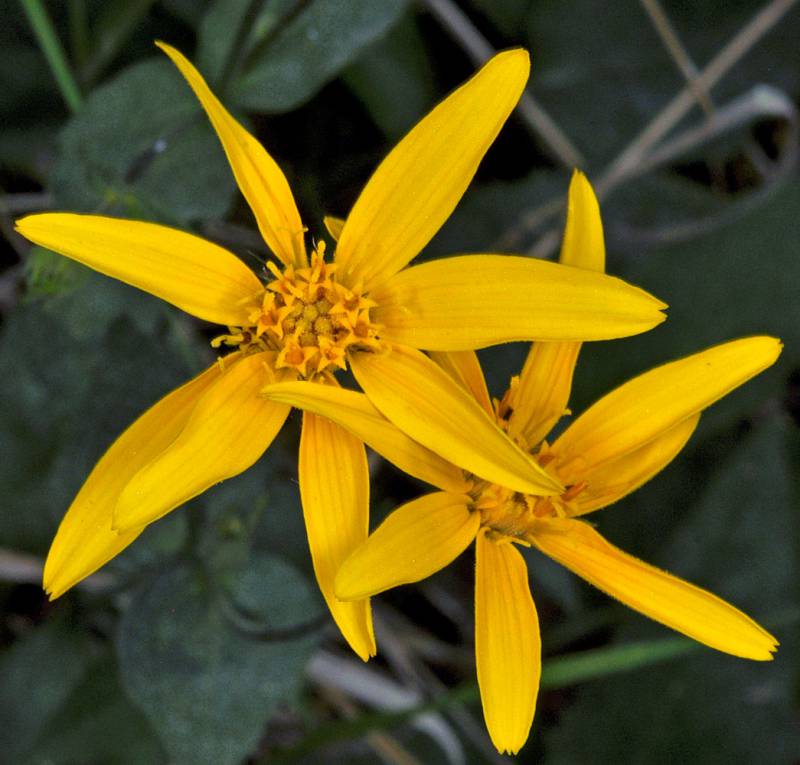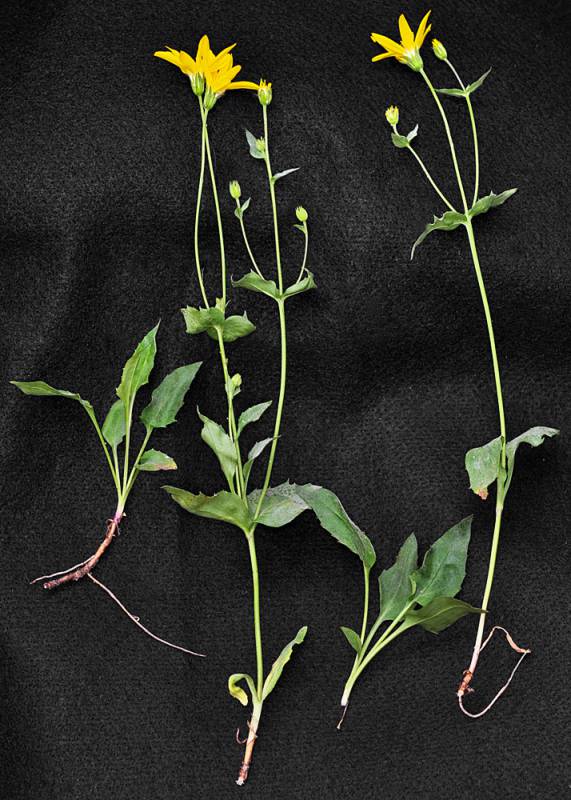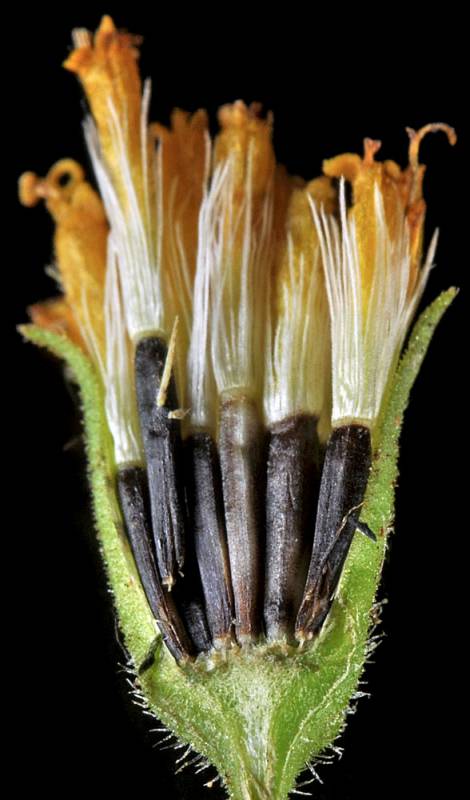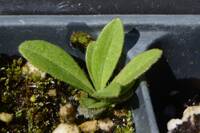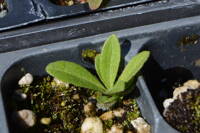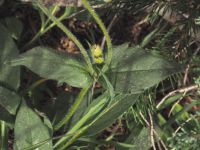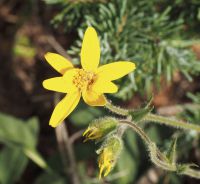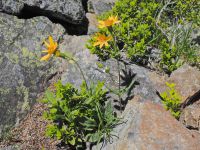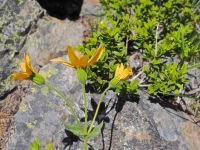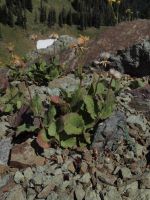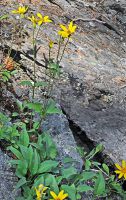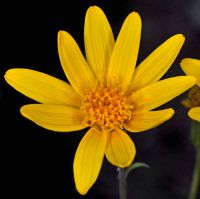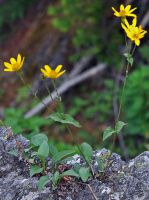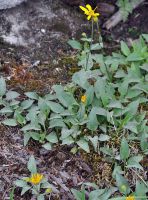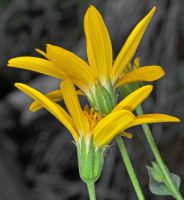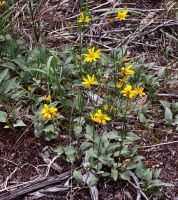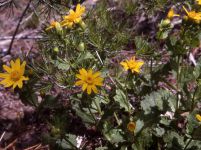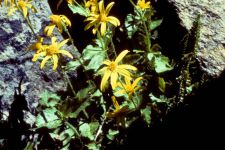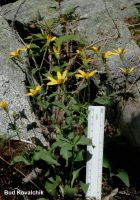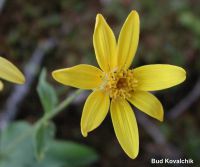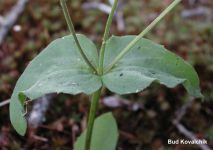Distribution: Occurring on both sides of the Cascades crest in the mountainous areas in Washington; British Columbia to Oregon, east to Alberta, Montana, Wyoming, and Utah.
Habitat: Dry, rocky slopes and meadows, from the subalpine to alpine.
Flowers: June-August
Origin: Native
Growth Duration: Perennial
Conservation Status: Not of concern
Pollination: Apomixis, bumblebees, butterflies
Perennial from a scaly caudex, the several slender stems 1-3 dm. high.
Broad, long-petiolate basal leaves sometimes on short separate stalks; cauline leaves 2-4 pairs, lance-elliptic or broader, rarely cordate, more or less toothed, 1.5-8 cm. long and 1-2.5 cm. wide, the middle ones larger than the lower.
Heads usually 3-9, small and narrow; involucre 7-13 mm. high, more or less glandular; rays and disk flowers yellow; pappus white, barbellate.
Achenes glabrous, at least toward the base
Publication: Bull. Torrey Bot. Club. 24: 297. 1897.
PNW Herbaria: Specimen records of Arnica gracilis in the Consortium of Pacific Northwest Herbaria database
WA Flora Checklist: Arnica gracilis checklist entry
OregonFlora: Arnica gracilis information
E-Flora BC: Arnica gracilis atlas page
CalPhotos: Arnica gracilis photos

